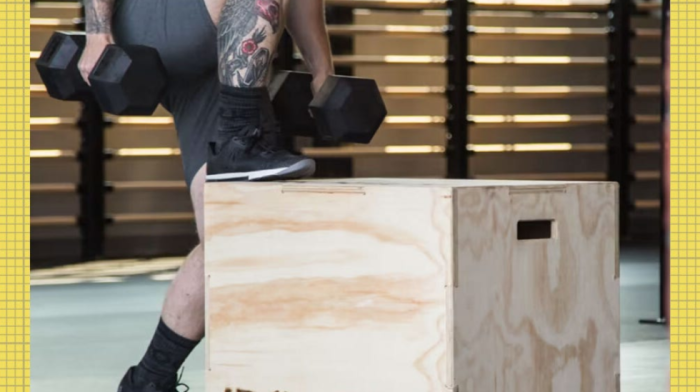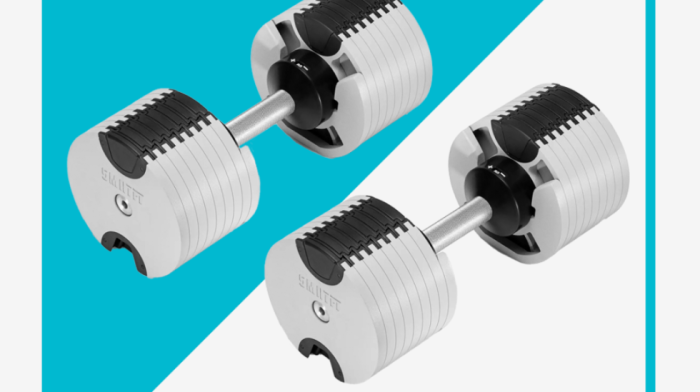Do you wonder what the best way is to count sets and reps? Why you shouldn't skip leg day? We have answers. This is #Gains, Explained, a space for you to ask any and every question about fitness. The Men's Health team (and other experts) are here for you.
To submit a question for a future column, fill out this form.
How often do I have to train to still make gains?
–Can’t Live in the Gym
STRENGTH TRAINING IS NOT something you need to do every day to see results. You’ll actually be more successful with plenty of rest and recovery, which is great news for busy guys with jam-packed work schedules and personal lives that don’t revolve around muscle. Whether your gym time is limited by necessity or just because you have other priorities, it helps to understand how many days per week you actually need to hit the gym, and for how long.
This isn’t a concept only gym slackers want to understand. Trainers and strength scientists have been just as interested in determining how little you can get away with committing to a workout routine as they are in identifying which exercises can be the most effective for instant results. This has led to years of study to determine strength training’s “minimum effective dose”—in other words, how little training you have to do to see results in the form of muscle and strength gains. A study published in the American College of Sports Medicine’s Health & Fitness Journal in 2013 found that just seven minutes of intense circuit training could be effective for improving strength and endurance, while another systematic review found that just a single set of six to 12 reps performed three to four times a week with a high intensity of effort can build strength.
You, however, won’t be working out in a lab under the watchful eye of exercise scientists measuring every single parameter of your progress with clinical equipment. You also have real world issues that will determine the circumstances of your training plan—so you’ll need to know about the real-world application of this approach. I talked with some trainers who have had to make the most out of limited time and constrained schedules to understand exactly how you can build the most effective minimal plan and put it into action.
First, it might help to understand that a minimal amount of training is a great approach to ease someone into a new workout habit. Starting out slow can be the best plan for beginners, according to Bespoke Treatments Director of Rehab and Training Dr. Cameron Yuen, DPT CSCS. “There is a lower chance of getting injured, there is less muscle soreness, it is more time efficient, and it is more sustainable,” he says. “Jumping right into a high frequency/intensity/volume program can limit your progression, lead to overtraining, and stall your motivation.”
That’s good to know if you’re starting from scratch. Once you get going, you’ll need to determine the best ways you can maintain momentum and progress, so your muscles can keep adapting. “Doing anything with a level of consistency, even training once a week, can have benefits for muscle and strength gains,” says Men’s Health fitness director Ebenezer Samuel, C.S.C.S. “That said, don’t expect to add much muscle or strength with that approach.”
To go beyond the absolute bare minimum for real progress, Samuel has a base recommendation. “In general, for clients looking to build muscle and strength who are tight on time, I advise they dedicate a half-hour a day to training twice a week,” he says. “In order to build muscle and strength at an appreciable rate, you need to find ways to not only move and sweat, but also to incorporate ‘progressive overload.’ A 30-minute workout gives you time to warm up enough that you can confidently overload a movement (or maybe a few) for three to four sets.”
Men’s Health Advisory Board member and celebrity trainer Don Saladino agrees—so long as you’re focused throughout the entire short session. “I believe that is very efficient, [if] that's someone coming in and putting the work in and utilizing their time,” he says. “In 30 minutes, you're gonna get a lot done.”
Like anything worth pursuing, you’ll need a consistent habit to see results over time—even if you’re only in the gym two or three times per week. Progression is the key to gains, so you need to focus on ramping up with effort and load in your short training periods as time passes. “In order to progress key movements over a period of weeks and months, you also need to expose yourself to those movements frequently enough to get better at them,” Samuel continues. “It can be tough for that to happen if you’re only doing an exercise once a week. Aiming to do it twice a week helps you build the mind-muscle connection needed to get more out of the movement and gradually push for new heights.”
You’ll be able to do this by ditching the bro science approach of focusing on individual muscle groups during each workout session for a more comprehensive approach. “From a practical standpoint, two to three full-body splits utilizing compound exercises with paired supersets work well here, as you work a lot of muscles at once with relatively high loads in a short amount of time,” says Yuen. That means you’ll pack in plenty of big muscle lifts—think deadlift variations, heavy presses, and squats—into your sessions, along with more focused accessory movements. Yuen says that you can also use “intensification techniques”—think rest-pause sets and drop sets—to wring even more gains out of a short session.
Structuring your plan is important, too. So that you can push as hard as possible when you do have the time to train, you need to rest and recover properly. That means eating right, too. “You should not follow this program on back-to-back days,” Yuen says. “There should be at least one day in between training sessions. There should also be a caloric surplus, with an emphasis on consuming more protein and carbohydrates for tissue building and energy.”
If you get to the point that you’re able to make more time for your training to go beyond the minimum effective dose, that’s great—but remember, finding the program that works for you is more important than just logging hours to feel like you’ve reached some arbitrary standard of commitment. Minimal, focused training is better than unfocused training—and the best workout plan is the one that will keep you coming back to the gym.
“If you stick someone on a six-day a week training program at 90 minutes a day, of course, they're going to get into good shape,” says Saladino. “But the reality is, are you going to stick with it after that? If you are on a specific term of training—whether it's a three-month plan, whatever it is—if you can't continue that, in my opinion, the program didn't work. The adherence is what's important.”
Putting all this advice into practice can get you the gains you want without spending half your life in the gym, but like all these experts are saying, you won't see any progress if you can't lock in and focus during those quick-hitting sessions. You'll only see the results if you're willing to put the work in for every single moment. Get in, go hard, and get out—and you'll have even more time outside the gym to enjoy the fruits of all that effort.


























Comments (0)